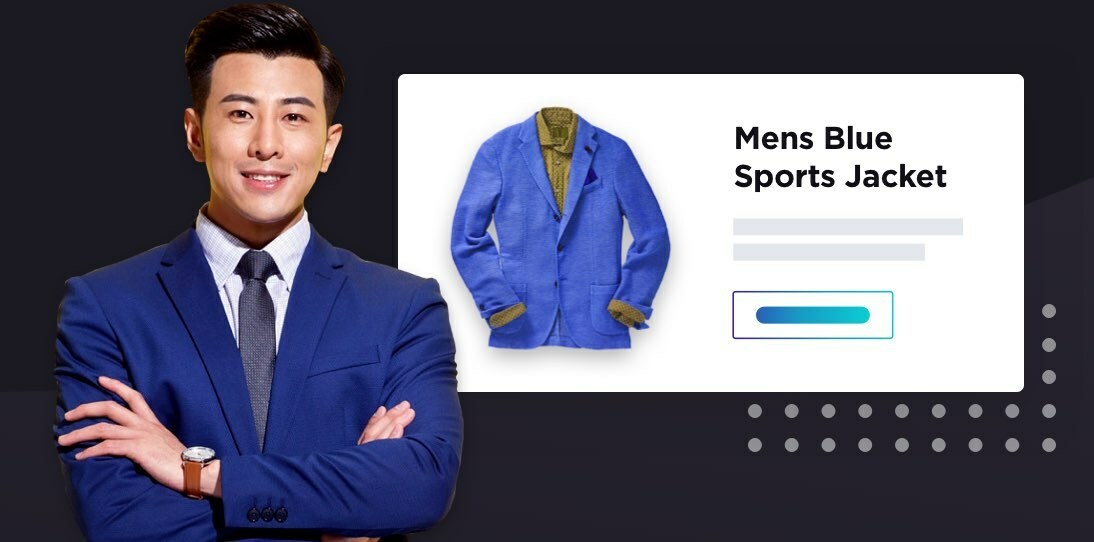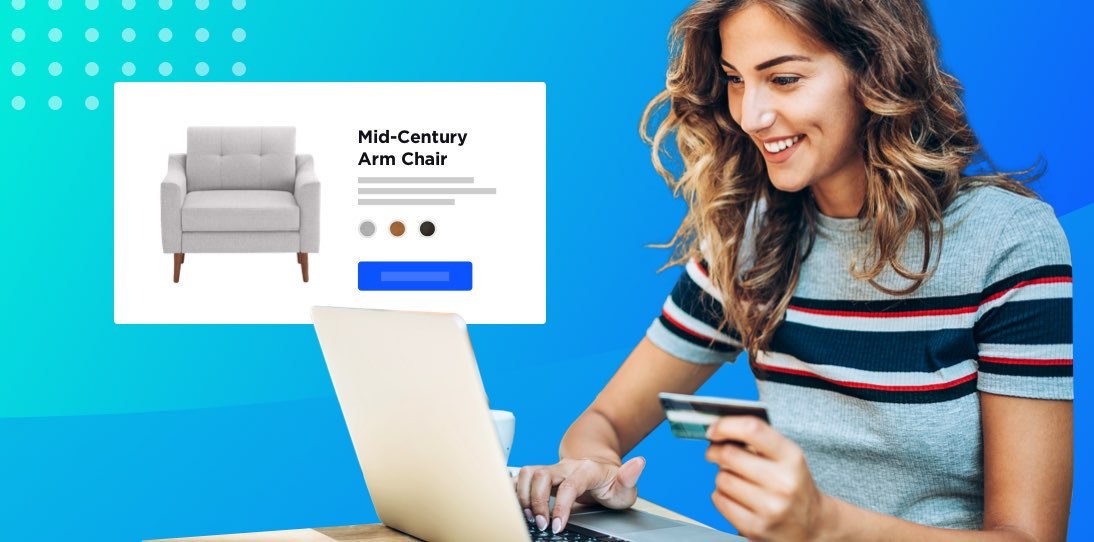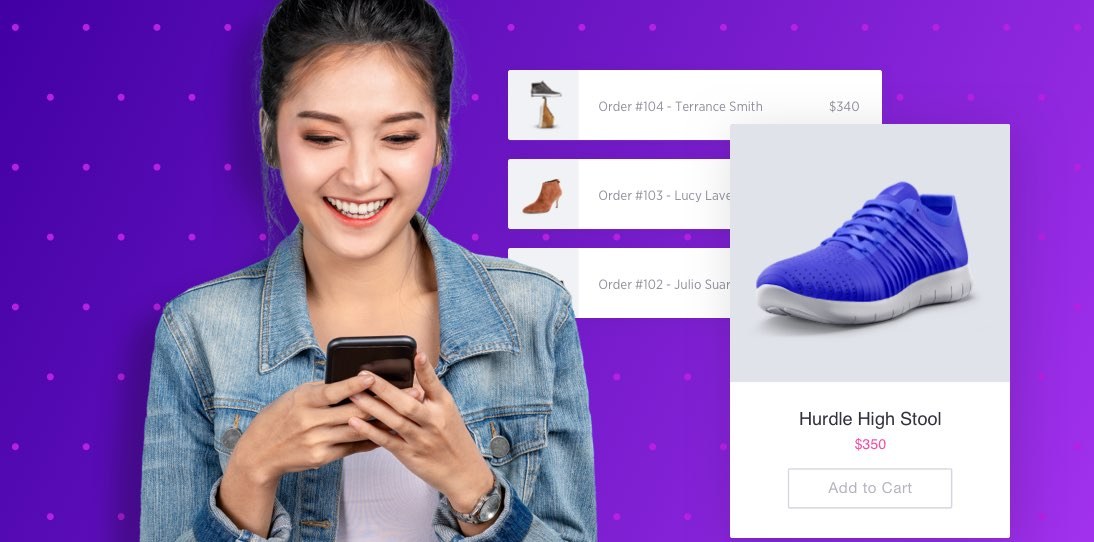- Enterprise
- Essentials
Why the Digitally Native Vertical Brand is Claiming Control

Increase Your Ecommerce Sales from $1 million to $100 Million
TABLE OF CONTENTS
Why the Digitally Native Vertical Brand is Claiming Control
Think back to a time before ecommerce. Legacy retail existed in person.
Then, the onset of the ecommerce era began.
The year was 2007, and two Stanford business students set out to create the perfect pair of men’s pants. The founders created a niche product: a new kind of pant with a curved waistband and better fit.
Now, they faced a choice. They could follow the legacy retail approach with traditional marketing methods — or pioneer a new way for businesses to adapt to the online era.
Bonobos ultimately chose to forge their own path. In a time when being a digital-first brand was virtually non-existent, they decided to launch their own website with just one niche product and narrow their focus to one thing: the end-to-end customer experience.
Bonobos decided to own control of their product, online experience and customer service.
Thus, the concept of a digitally native vertical brand (DNVB) was born.
Bonobos is an early DNVB success story. They brought in $100K in revenue their first year, and were eventually acquired by Walmart for $310 million.
Since then, some of today’s most popular online brands — like Casper, Dollar Shave Club and Glossier — have followed the same model to churn out similar success.
Let’s take a look at the recent rise in these new digitally native vertical brands and how they are changing the ecommerce landscape as we know it.
What is a Digitally Native Vertical Brand?
A digitally native vertical brand (DNVB) is a brand that was born online — but it doesn’t stop there.
DNVBs sell their own products on their own website, and claim full control over their customer experience, from factory to consumer.
Bonobos founder Andy Dunn first coined the term in his Medium post, “The Book of DNVBs,” where he points out a few key attributes:
“The digitally native vertical brand (DNVB) is maniacally focused on the customer experience. Its primary means of interacting, transacting, and story-telling to consumers is via the web.” — Andy Dunn, Bonobos Founder + CEO
Let’s break it down further.
A digitally native brand is a business that originated online. Think direct-to-consumer favorites like Casper and Harry’s, and even marketplace retailers like eBay and Amazon. Contrast to beginning as brick-and-mortar businesses, these brands started online and grew their brand through their online store experience.
A vertical brand is a brand that oversees every step of their product and brand experience, from factory to consumer. If a brand sells their product through a retailer like Macy’s or a marketplace like Amazon, it would no longer be classified as a vertical brand.
The DNVB model marries the two.
Digitally native vertical brands take advantage of the low overhead costs and global reach of originating online, while cutting out the middleman to gain higher margins and control.
The manic focus on the customer experience is what sets them apart.
However, just because a digitally native brand must start online doesn’t mean they have to stay online. More and more DNVBs are following the Warby Parker model of building their brand online and extending this experience offline.
DNVBs are Growing Exponentially
According to Digital Commerce 360, DNVBs are growing nearly three times as fast as the average e-commerce retailer.
So what makes them this much more successful?
Similar to a large part of their primary millennial and Gen Z audiences, these brands didn’t know a world before ecommerce. With 78.7% of Gen Z already buying online in 2021, the DNVB digital-first approach taps into their digitally-savvy audience for growth.
The COVID-19 pandemic accelerated the shift from offline to online retail by five years, and now almost 20% of global retail sales occur online. Being digitally-native puts these brands ahead of the curve.
Digital Commerce 360’s 2020 Cosmetics Report also uncovered that digitally native vertical brands grow web sales faster than non-DNVBs.
It’s no surprise cosmetic DNVB Glossier’s CEO has credited 90% of their brand’s revenue growth to social influence. With social media playing a key role in DNVB brand strategies, the 15% rise of digital media usage in 2020 has surely only accelerated their growth.
DNVB vs DTC
The terms digitally native vertical brand (DNVB) and direct-to-consumer (DTC) are similar, but different.
DNVBs are DTC brands. DTC brands, on the other hand, are not necessarily DNVBs.
The main difference: DNVB is a business model, while DTC is a distribution model.
1. DNVB.
DNVB is a brand that sells its own products on its own website. DNVBs sell directly to consumers, and own their DTC channels.
DNVBs go beyond controlling the distribution method, but also the end-to-end brand experience across production, brand story-telling and customer support.
For these brands, the ecommerce channel is an enablement layer — it’s not the core asset.
Burrow is an example of a digitally native vertical brand.
Burrow re-invented how customers buy furniture by allowing customers to design and buy custom furniture online through their own website. They control every step of the customer journey, from the product to the online experience to the follow up support.
2. DTC.
DTC is a brand’s method of selling direct to consumers.
DTC selling channels can include a brand’s own website and physical storefronts, while some even incorporate marketplaces into their channel mix.
With the success of DTC selling, some B2B brands are now adding a DTC channel.
COVID-19 has even caused the model to take on new forms like restaurant-to-consumer and alcohol-to-consumer.
Are DNVBs the Future of Retail?
According to Andy Dunn, DNVBs don’t have to adapt to the future of retail, they are the future of retail.
“Their strategy creates a brand loyalty impossible to create in the commoditized world of channel, and as traditional vertical retail dies a slow death, the DNVBs rise to take their place.” — Andy Dunn, Bonobos Founder + CEO
While it’s still early to definitively tell, the future for DNVBs looks promising. Here are a few key ways DNVBs will continue to write the future of retail:
1. Embrace the digital era.
The DNVB model not only embraces the digital era — it takes advantage of it.
Its primary means of interacting and transacting are digital, just like its primary audience. With over 15% of US total retail sales estimated to come from ecommerce channels by 2022, brands born online are already living out the future of retail.
2. User experience is a focus.
The ‘manic’ focus on customer experience is what sets DNVBs apart from traditional ecommerce brands.
Today, a combination of product, shopper experience and customer service collectively become the brand. By keeping the customer at the heart of the value proposition, DNVBs are creating more personalized experiences. These memorable buying experiences, in return, can lead to more long-term customer loyalty.
3. There is a clear audience.
The customer is the driving force for DVNB brands, meaning DNVBs are obsessed with understanding customer behaviors to make business decisions.
DNVBs are able to connect with niche audiences through their unique products by knowing exactly what their customers want and need from deeper data insights.
By targeting the right audience, they not only gain customers but advocates.
Challenges Facing DNVBs
Although we’ve seen our fair share of wildly popular DNVBs over the past few years, being a digitally native vertical brand doesn’t come without its challenges.
The truth is, like all ecommerce sites today, DNVBs are also faced with keeping up with the Amazons of the world. With Amazon growing at a faster rate than the overall ecommerce industry, competition for market share is tough.
To keep up, DNVBs must play to their advantage — their brand.
But, DNVBs are having to shell out mega marketing dollars to do so. Those attractive high margins don’t necessarily equal profitability once exorbitant marketing budgets and sponsored partnerships factor in.
DNVBs must also offer a unique product and service bundle in order to fit a niche market.
Taking their pick from selling points like price, quality, experience or support, DNVBs need to stick to what differentiates their product and brand in order to stand out from competition.
Also cutting into their ROI are the costs of providing these personalized products and experiences.
DNVBs are attractive because they sell products at a lower cost with a higher quality. They have to be mindful of investments in personalized products and experiences incurring higher production costs.
With 84.7% of retail sales in the U.S. still happening offline, there is still a draw to having a physical presence. This allows customers to interact directly with the brand, product and salespeople.
Some DNVBs are now bringing their brand to life through brick and mortar locations, pop up shops, or even on the shelves of Target.
Regardless, the brand experience across channels must be seamless.
4 Digitally Native Vertical Brand Examples
Brands across all retail verticals have earned success by following the DNVB model.
1. Burrow
Burrow has changed the way we shop for furniture.
No more showroom sofa testing. The brand allows customers to build and order custom pieces through their own website.
The customer designs it and orders it online. Burrow builds it and delivers it (for free). Easy returns cap the full end-to-end customer experience.
2. LARQ
LARQ fills a niche by creating the world’s first self-cleaning water bottle. Their brand pillars of sustainability and technology are brought to life through their online customer experience and story-telling.
Their latest success as a DNVB: landing a $1M investment on Shark Tank
Now, LARQ has evolved their digitally native vertical brand into selling through big box retailers like Nordstrom, Neiman Marcus and Williams-Sonoma.
3. Solo Stove
Launching a portable, smokeless fire pit online makes Solo Stove a disruptor, to say the least. Their mission and branding from day one has been clear: to craft the world’s highest quality fire pit.
By serving a niche market with high quality materials and a seamless customer experience, Solo Stove is tapping into the benefits of being a DNVB brand.
REI, Dick’s Sporting Goods and Wayfair are now an extension of their DNVB success.
Wrapping Up
DNVBs didn’t know a time before ecommerce. Rather, they were formed in the digital-first world we know today, and fully embrace the digital era.
It’s important to note that DNVBs are not just ecommerce brands. DNVB product gross margins are also at least double that of ecommerce. By cutting out the middleman, DNVBs radically transform the economics of commerce by taking it vertical.
The onset of the Ecommerce Era is now continuing to transform before our eyes as more and more DNVBs emerge. These brands will continue to shape the future of retail as we know it.
Only time will tell how the DNVB model will continue to evolve.
DNVB: Digitally Native Vertical Brands FAQs
1. What is DNVB?
A DNVB is a digitally native vertical brand. DNVBs originate online, and sell their own products on their own website. They maintain full control over the product and customer experience, from factory to consumer, and rely heavily on this direct customer interaction to build their brand.
2. What is vertical branding?
Vertical branding is cutting out the middleman to maintain full control of the end-to-end brand experience — from production, to shopping experience to customer support. Vertically integrated brands can claim more pricing control, which has the potential to lead to higher margins.
3. What are the differences between DNVB vs DTC?
DNVB is a business model, while DTC is a distribution model. A DNVB sells directly to consumers, but selling DTC doesn’t necessarily mean a brand itself is digitally native or vertically integrated. DNVBs are DTC brands, but DTC brands are not necessarily DNVBs.
4. When did DNVB brands grow in popularity?
Bonobos Founder and CEO Andy Dunn first coined the term “digitally native vertical brand” in 2017. With the recent explosion of the digital-first era, this new model has risen in popularity following the success of disruptive DNVB brands like Warby Parker, Caspar, Glossier and Harry’s. Although they have not been around for long, DNVBs have proven to have a place in the future of retail.


